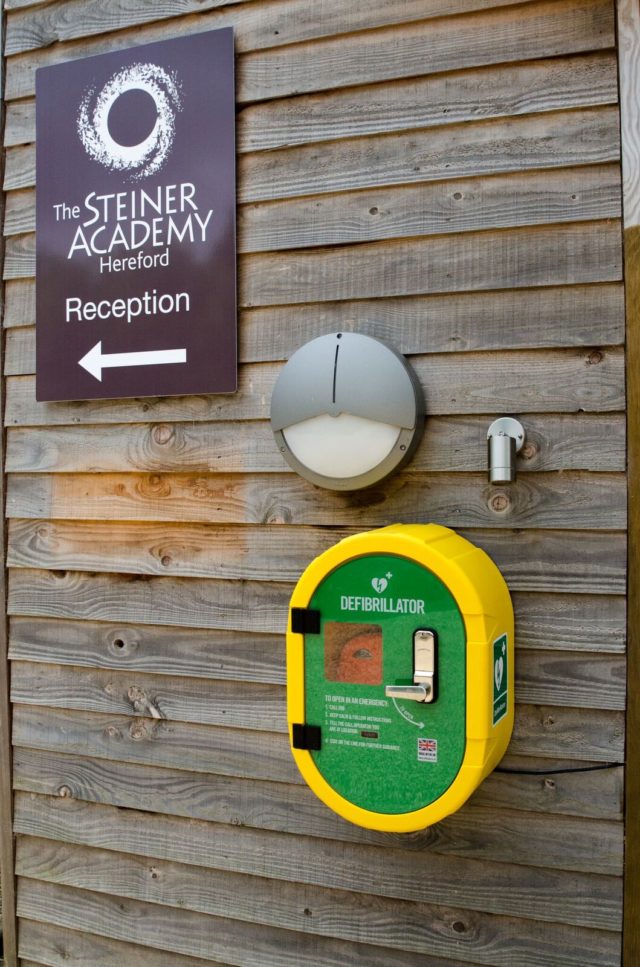Map of Britain’s defibrillators ‘could save thousands of lives’
There are tens of thousands of public defibrillators but the main barrier to them being used is that their whereabouts are not always known.

Bystanders who witness someone going into cardiac arrest could soon become lifesavers thanks to a new project which aims to map all of Britain’s public defibrillators.
Information about the availability of the devices – which give a high energy electric shock to the heart – is patchy and not all are known to ambulance services.
When a member of the public calls 999 after finding someone whose heart has stopped, they might not be directed to where they can find a publicly available defibrillator due to a lack of information on the whereabouts of the devices.
To combat the challenge, the NHS, the British Heart Foundation (BHF) and Microsoft have vowed to map all of the UK’s public defibrillators.
The BHF has estimated that thousands more lives could be saved from cardiac arrests if the locations of all defibrillators were known to emergency call handlers.
Previous research has found that just 3% of patients who suffer cardiac arrests that happen outside of hospital are treated with public access defibrillators, which the charity says significantly reduces the survival chances of tens of thousands of people every year.
One parent has welcomed the initiative to improve awareness about the whereabouts of defibrillators after saving the life of his son with one of the devices.
Stuart Askew used a public access defibrillator on his son Ethan last April after the 15-year-old collapsed on the school field.

After running across the field to find the school receptionist performing CPR on his son, Mr Askew called on Ethan’s classmates to retrieve the defibrillator – which the school had after making a successful application to the BHF for a community defibrillator for the village.
He then used the device on his son.
The youngster has now made a complete recovery, following surgery to treat a narrowed artery, which was caused by a genetic condition.

“Thankfully CPR had been started quickly. I had installed the batteries in the defibrillator just two days earlier, and quickly called for a group of his classmates to run and get it.
“I know that without the CPR and defibrillator, Ethan wouldn’t have survived.
“I’ve had so many ‘what if’ moments since it happened. What if no-one had known CPR? What if the defibrillator hadn’t arrived in time? What if I hadn’t put the batteries in when I did?
“We were lucky that we knew there was a defibrillator nearby – I know many people aren’t as lucky. It’s brilliant to know that the BHF will be working with Microsoft and the NHS to ensure that defibrillators across the country are mapped, so they can help to save people like Ethan.”

The BHF said that one of the biggest barriers to their use is that the location of the devices is often unknown.
The new project, a collaboration between the BHF, NHS England, NHS Scotland and Microsoft solutions provider New Signature, will see a comprehensive map of defibrillators across the UK created over the next 12 months.
There are more than 30,000 out-of-hospital cardiac arrests every year in the UK, but fewer than one in 10 people survive.
In countries where the public are better equipped to recognise and deal with cardiac arrests, survival rates are up to three times higher, the BHF said.
A cardiac arrest occurs when a person’s heart suddenly stops pumping blood around their body, which can starve the brain of oxygen and lead to a person falling unconscious and stopping breathing.
“This innovative project will give every ambulance service immediate access to the location of defibrillators in their areas, so they can direct bystanders to their nearest life-saving device in the event of a cardiac arrest,” said Simon Gillespie, chief executive at the BHF.
“Every minute without CPR or defibrillation reduces a person’s chance of surviving a cardiac arrest by around 10%.
“Thousands more lives could be saved if the public were equipped with vital CPR skills and had access to a defibrillator in the majority of cases.”
Clare Barclay, chief operating officer at Microsoft UK, said: “This innovative partnership could quickly equip 999 call handlers with information that could mean the difference between life and death for someone suffering a cardiac arrest.”
The scheme will be piloted by West Midlands Ambulance Service and the Scottish Ambulance Service, before being rolled out across the UK.





